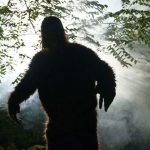
Strange “Hobbit” Mammal Among Three New Prehistoric Species Found in North America
Jocelyne LeBlanc August 22, 2021
Three new prehistoric mammal species have been unearthed in North America with one of them being the size of a house cat and named after a character in “The Hobbit”.
Named Beornus honeyi, the furry creature was a condylarth which were four-legged mammals that looked similar to a dog but were the ancient ancestors of hoofed mammals such as rhinos and horses. Additionally, it had extra large molars which caused its cheeks to puff out. Its large flat teeth would have helped it to grind up plants and possibly feed on insects.
While Beornus honeyi was only about the size of a house cat, it was considered quite large compared to other rat-sized condylarths that lived in North America during the early part of the Paleocene Epoch (65 to 55 million years ago, immediately after the extinction of the dinosaurs).
 Beornus honeyi was about the size of a house cat.
Beornus honeyi was about the size of a house cat.
Madelaine Atteberry, who is a researcher at the University of Colorado Boulder and the lead author of the study, explained to Live Science the reasoning behind the name choice, “I have always been a huge Tolkien fan, and there is a long-standing tradition of naming early Paleocene mammals after Tolkien characters,” adding, “I chose Beornus honeyi because of the large size and ‘inflated’ appearance of its teeth compared to the other mammals from this time period.”
There were two other previously unknown prehistoric creatures found in addition to Beornus honeyi at Wyoming’s Great Divide Basin. The two new species, which were named Conacodon hettingeri and Miniconus jeanninae, were also condylarths. In fact, all three of the newly discovered species were closely related to each other.
While this is very exciting news regarding prehistoric mammals, those bones were just a small part of the 420 or so mammalian fossils that have been unearthed at the Great Divide Basin, so there may be even more previously unknown species from around that same time period that have yet to be found.
 Beornus honeyi was the ancient ancestor of hoofed mammals.
Beornus honeyi was the ancient ancestor of hoofed mammals.
These are just three examples of the countless small mammals that apparently began thriving after the extinction of the dinosaurs. Furthermore, these new species are helping experts in learning more about the earliest mammals that inhabited North America after the asteroid wiped out the dinosaurs. A picture of what these three mammals would have looked like can be seen here.
The study was published in the Journal of Systematic Palaeontology where it can be read in full.
Tags bones fossils Hobbit mammals new species North America Paleocene prehistoric Wyoming
MU*





















